Current State of the Internet in Paraguay
17/09/2024

As part of our upcoming annual LACNIC event that will be held in Asunción, we decided to examine the current Internet landscape in Paraguay based on several sources of information consolidated in the Internet Measurements portal.
This portal was developed by LACNIC’s R&D department and provides valuable country-specific information to support decision-making. There, you can select a country to view its general demographic data, main ASNs, LACNIC resource allocations, number of members by category, and BGP announcements for ASNs and IP prefixes.
Prefixes and ASNs Announced in BGP
The image on the left shows the percentage of announced ASNs by type. In BGP, ASNs can be classified into three types:
- Origin ASNs: ASNs announcing the prefixes (Blue).
- Transit ASNs: ASNs connecting to the origin ASN within a country (Green).
- Upstream ASNs: ASNs providing connectivity to another country (Red).
The chart on the right shows the percentage of announced IPv4 prefixes (in blue) and announced IPv6 prefixes (in red).
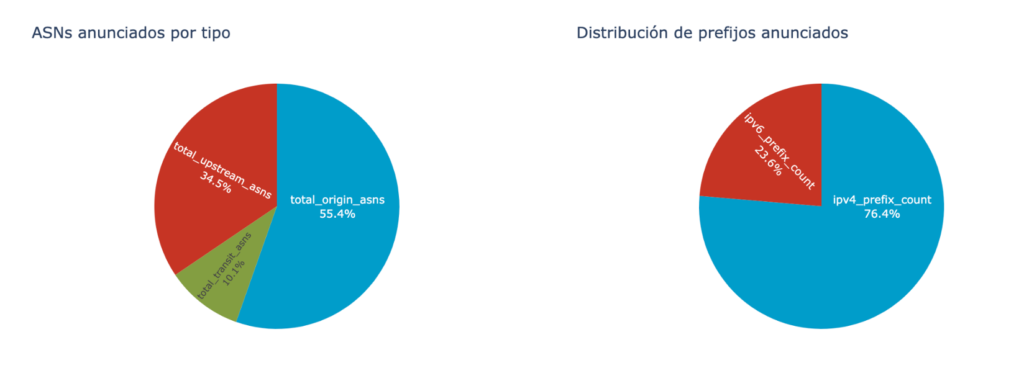
Average AS PATH length is another interesting measurement. In Paraguay, this is 6.05, compared to 5.02 in Bolivia, another landlocked Latin American country.
The average AS PATH lengths for Paraguay’s neighboring countries are as follows:
- Argentina: 6.05
- Brazil: 5.53
- Chile: 5.43
DNS
There are several aspects to consider when analyzing the implementation of DNS. First, we can observe the response times from Paraguay to the root servers. It should be noted that Paraguay hosts five instances of root servers F, D, I, E and L. It is also interesting to observe the response time to the LACTLD anycast cloud. These two aspects can be seen in the graphs below.
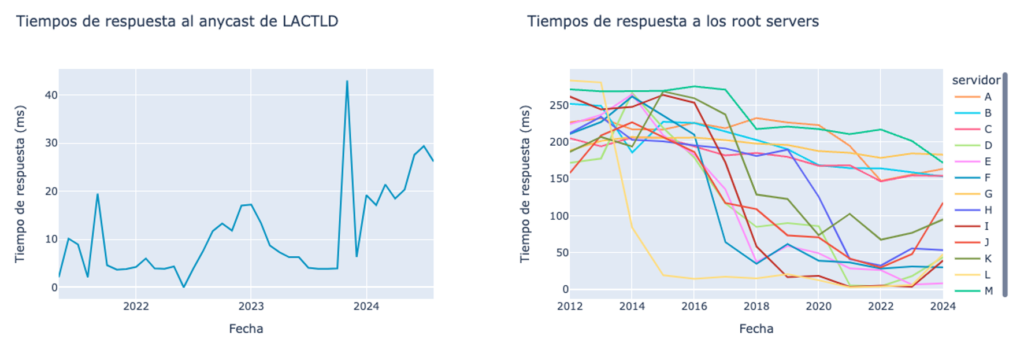
RIPE Atlas
RIPE Atlas is an open and free Internet measurement platform. It has extensive capacity for measuring latencies, traceroutes, DNS, HTTP, NTP, and more. It relies on community participation to host probes and achieve sufficient coverage to collect complete and impartial data.
In Paraguay, probe coverage is very low. As can be seen in the figure below, there are currently only eight active probes in the country, one of which is an anchor installed at Internet & Media S.A.
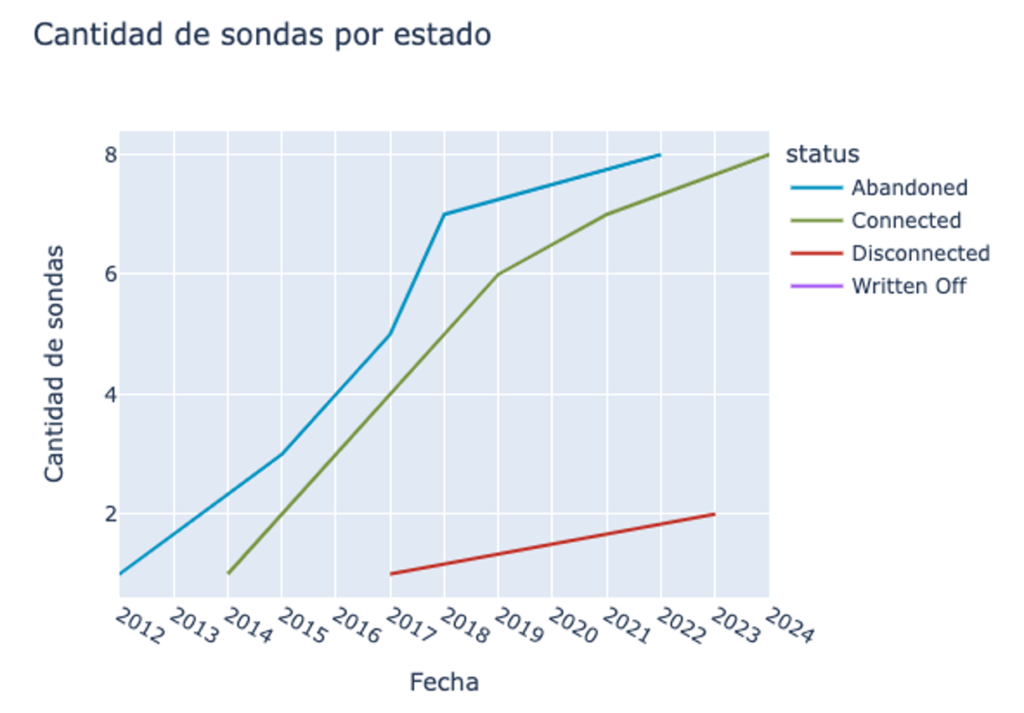
This number of probes, however, is not enough to provide meaningful and representative data for the country. To improve coverage, we have compiled the following table with recommendations of networks where additional probes are needed.
If your network is on the list, don’t hesitate to contact us to discuss the matter. We will be happy to support you while you install the probe.
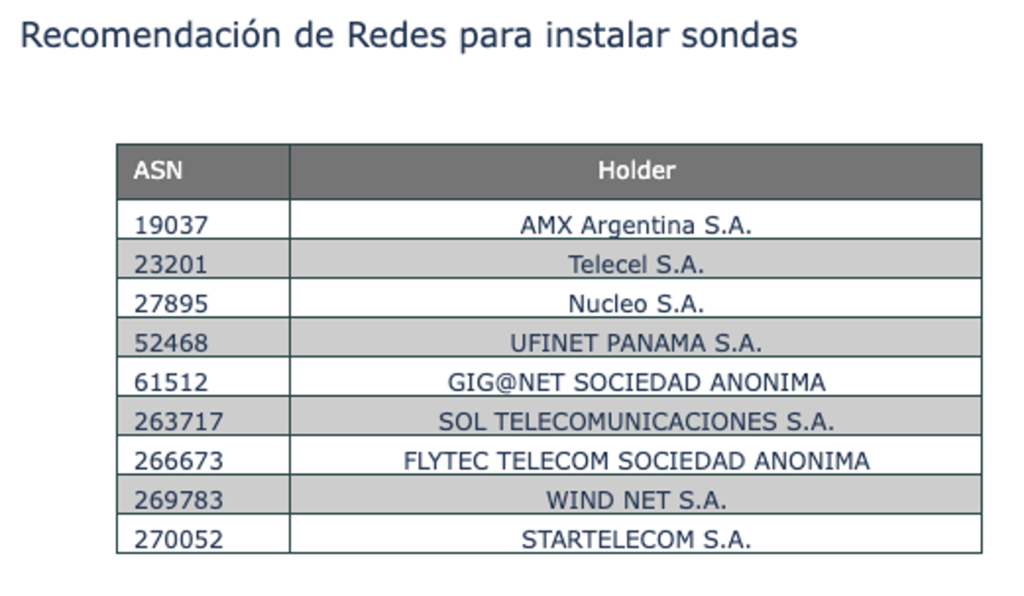
The graph below illustrates the number of hops packets need to go through to travel from Paraguay to the other countries in the region:
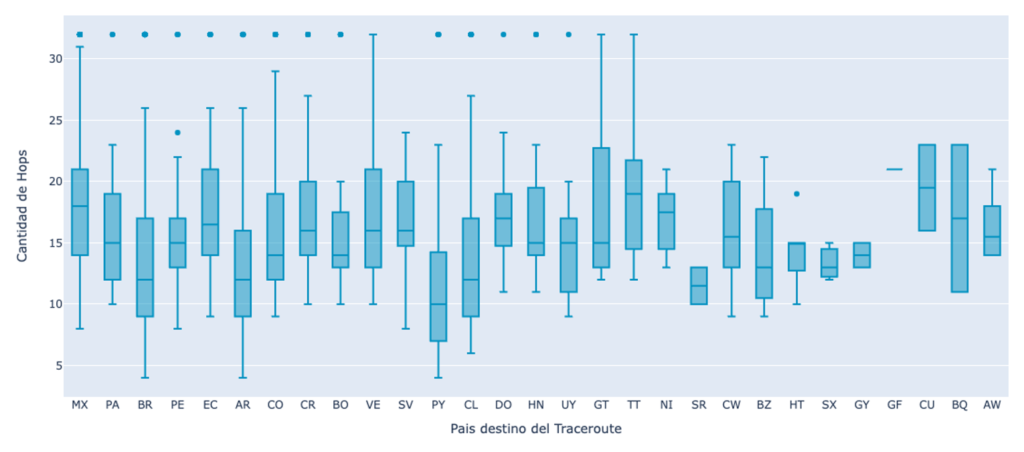
MANRS
Mutually Agreed Standards for Routing Security (MANRS) is an initiative aimed at significantly enhancing the security and resilience of the global Internet routing system. It promotes the adoption of well-established industry best practices and technological solutions by those running BGP to address the most common threats.
MANRS readiness indicates how well MANRS Actions are implemented. The table below shows the degree of readiness for each metric in Paraguay:
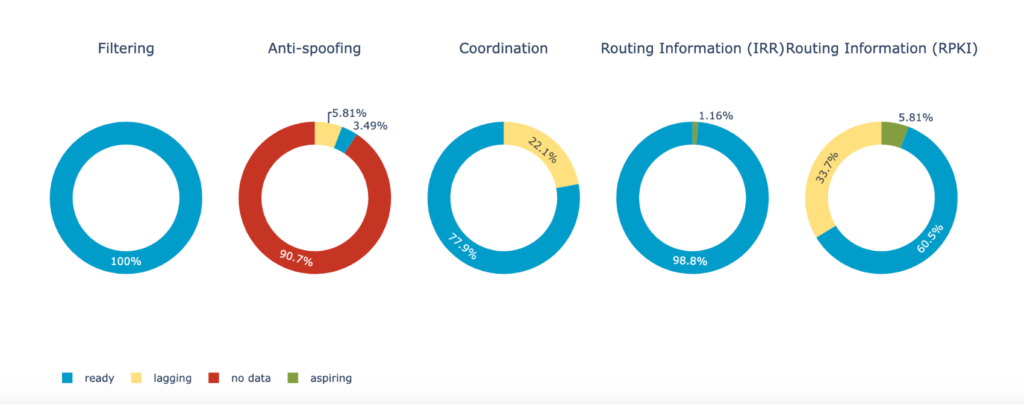
As can be seen in the graph above, Paraguay has a very high percentage of routes registered in an IRR and 100% filtering, which significantly contributes to the security and resilience of the network.
However, RPKI (60.5%) still has a long way to go, especially compared to Bolivia, where this number is already 77.6%.
Likewise, coordination is on the right track, although it is still below its neighbors Argentina and Chile with 80% and 85% respectively.
IPv6 Adoption
Today, Paraguay has an IPv6 adoption rate of almost 35%. As the image shows, this is higher than the regional average, but there is still a long way to go.
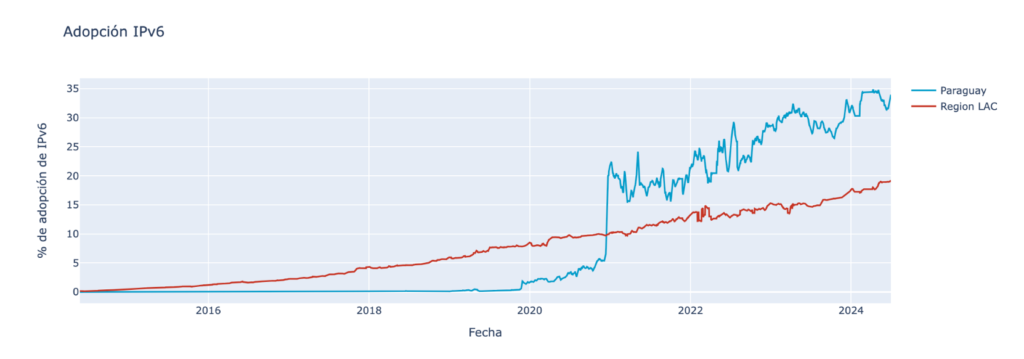
We have also listed the main ASNs in Paraguay and the adoption rate for each one:
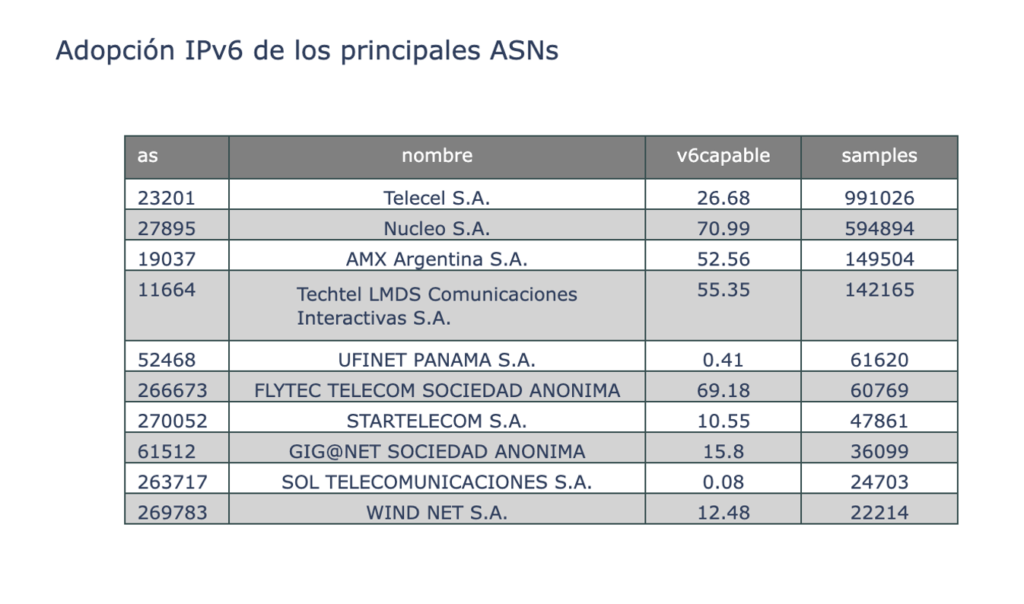
RPKI
By using RPKI, operators in the region can check whether an autonomous system is authorized to announce a specific range of prefixes. This ensures that Internet traffic reaches the right destination and that it does so safely.
Because the deployment of RPKI is not yet universal, the validation can have varied results. Prefixes that appear as “valid” are protected by RPKI and we can be sure they can be trusted. Those that appear as “not found” are not yet protected by RPKI. “Invalid” is used for incorrect or malicious announcements.
This chart was taken from the FORT Monitor Project and shows the status of prefixes with their origin in Latin America and the Caribbean when RPKI validation is performed. As RPKI deployment progresses, the number of unprotected (not found) prefixes will decrease and the accuracy with which invalid prefixes are identified will increase.
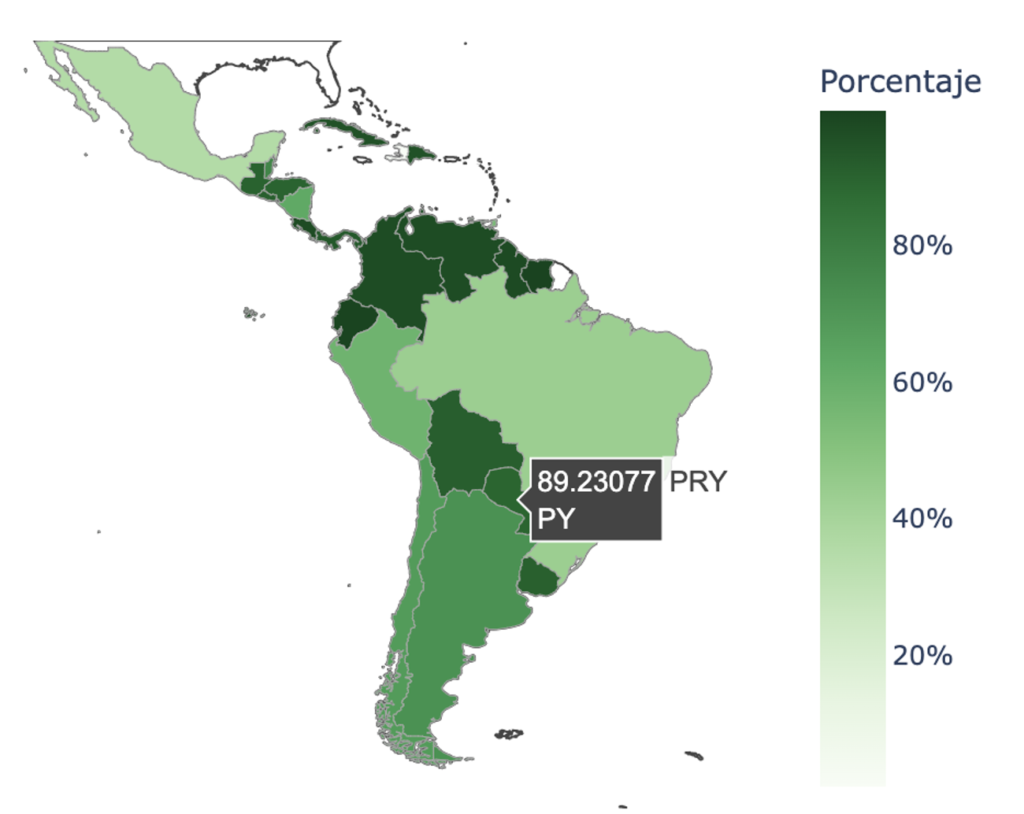
Conclusion
This review of various aspects of the Internet in Paraguay shows both the efforts that are on the right track and the areas where additional work is needed.
Improving the coverage of RIPE Atlas measurement probes is particularly important. By increasing the number of probes, we will be able to gather more representative and impartial data to continue measuring connectivity in Paraguay and find opportunities for further improvement.
LACNIC42 / LACNOG2024
Several of these topics will be addressed in the tutorials scheduled to be held at the LACNIC event, including best practices for MANRS and IPv6. More information is available at the following link.
Additionally, there will be a dedicated session for the Paraguayan Internet community to discuss these topics. Titled “Paraguay, Present and Future,” this session will take place on the afternoon of Wednesday 9 October. Its goal is for participants to discuss Internet operation in Paraguay, the challenges it faces, and potential solutions based on the adoption of best practices and standards. Participation will be in person only.
We look forward to seeing you there!
The views expressed by the authors of this blog are their own and do not necessarily reflect the views of LACNIC.